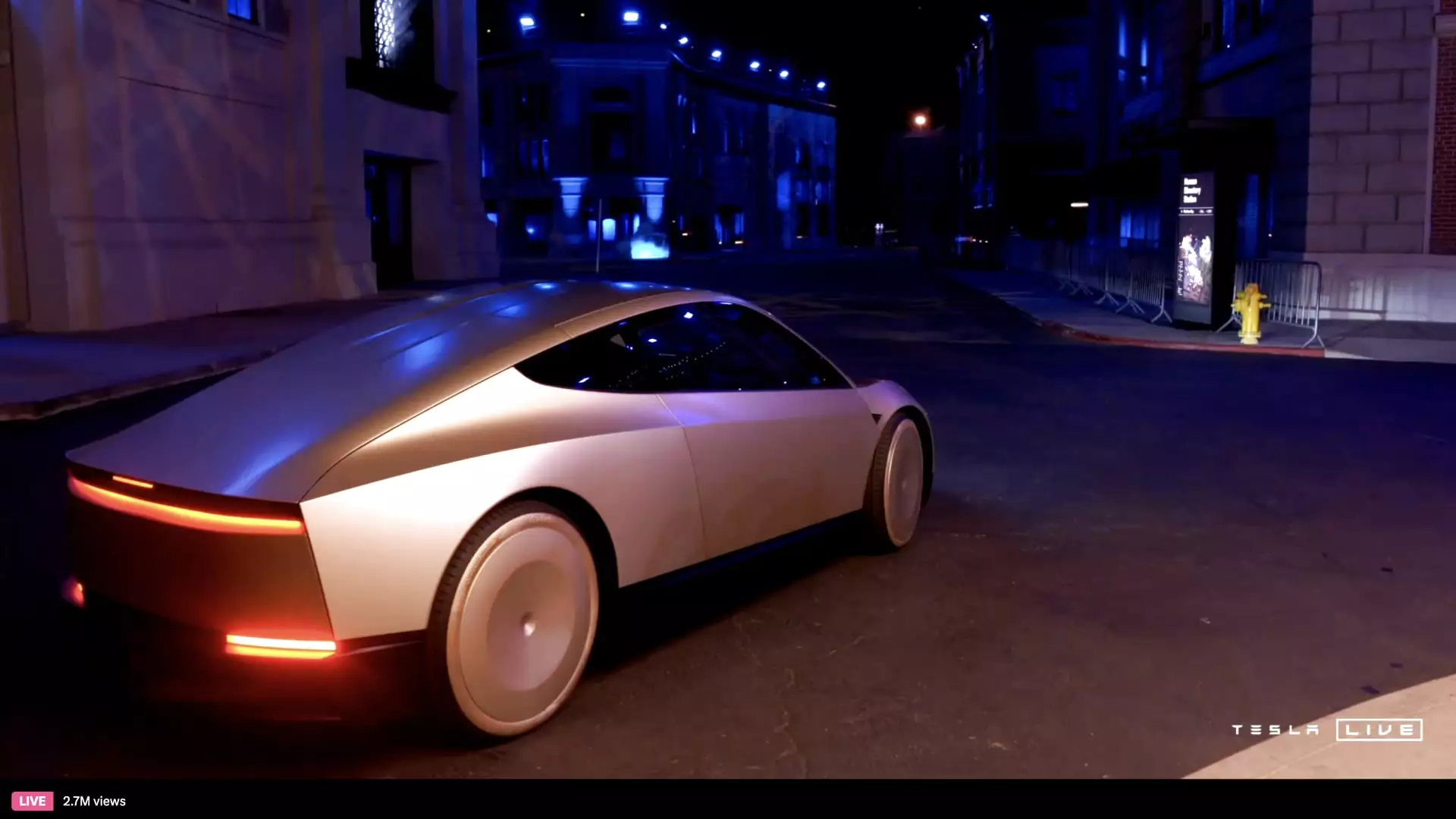The automotive industry has long been captivated by the prospect of fully driverless cars, with electric vehicle (EV) maker Tesla at the forefront of this promising yet often frustrating journey. Recently, Tesla CEO Elon Musk unveiled an enticing glimpse of this future with the proposed Cybercab, a sleek, innovative two-seater devoid of traditional driving controls. As anticipation grows for these autonomous vehicles, it’s crucial to scrutinize the history of Tesla’s promises and the implications of the current developments.
Musk’s demonstration of the Cybercab at Tesla’s “We, Robot” event sparked a flurry of discussions, particularly surrounding the vehicle’s design and intended price point of under $30,000. While critics may point out that Musk has a track record of lofty claims without concrete timelines, the revelation of 21 Cybercabs along with a promise of further autonomous car development suggests the company is inching closer to its long-term goals. Nevertheless, the absence of details on production sites and timelines leaves room for skepticism.
Musk has vehemently predicted that the Cybercab will be operational by 2027. However, previous timelines set by the CEO regarding the release of driverless technology signal a concerning trend of delayed expectations. For instance, promises made back in 2015 about achieving “full autonomy” by 2018 were never met. The disparity between Musk’s forecasts and the reality of technological advancement raises valid questions about the credibility of his statements.
Tesla’s history is replete with ambitious goals regarding autonomous driving. Musk’s assertion in 2016 that a Tesla could make a coast-to-coast journey without human intervention by the end of 2017 has yet to materialize. Even more striking is the pledge that by 2020, Tesla would possess a million vehicles prepared for autonomous taxi operations. Yet, as we approach 2024, none of these milestones have been met, igniting debates about the actual feasibility of Tesla’s ambitions.
Musk’s repeated reassurances about a bright future overshadowed by fruitless promises have sparked skepticism from investors and the public alike. The “supervised” Full Self-Driving (FSD) technology currently available—which mandates a human driver ready to intervene—challenges the narrative fed to stakeholders regarding Tesla’s advanced capabilities. With each passing year, the allure of full autonomy seems increasingly elusive.
Despite the pitfalls of the past, Musk did unveil some intriguing features during the Cybercab announcement, specifically the inductive charging system. This advancement could revolutionize the way autonomous vehicles recharge, allowing for seamless operation without physical plugs. Furthermore, Musk hinted at the development of a Robovan capable of transporting up to 20 individuals or cargo. Such innovations may represent the real potential of Tesla’s engineering prowess, even if their timelines remain vague. However, the challenge lies in delivering these promises in a timely manner.
As Musk engages with investors, asserting that Tesla’s focus on autonomy will be its paramount future aspect, the reality remains starkly different. The operational landscape is wrought with obstacles ranging from regulatory approval to technological limitations. Rivals in the automotive sector are not sitting idle; companies such as Waymo and Cruise are aggressively progressing towards their own autonomous solutions. Thus, the competitive pressure might outpace Tesla’s ventures unless tangible advancements materialize soon.
Ultimately, the Cybercab initiative encapsulates both the potential brilliance and inherent perils of Tesla’s trajectory. While innovations like inductive charging and the promise of versatile new vehicles signal progress, the long history of unfulfilled expectations looms large. Investors and consumers alike are left pondering whether Musk’s confident assertions can translate into reality, or if they will remain part of the company’s ongoing saga of missed deadlines. As the landscape evolves, it remains essential to balance enthusiasm with critical scrutiny, particularly in a field as transformative as autonomous driving. Therefore, while the Cybercab may indeed herald a new era for Tesla and driverless technology, only time will reveal if this vision can overcome the pitfalls of the past and align with a promising future.


Leave a Reply